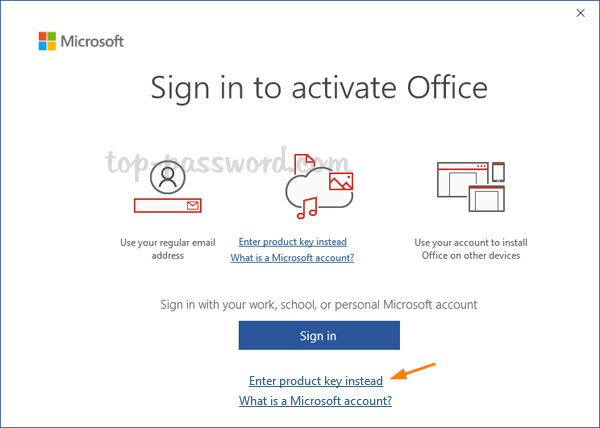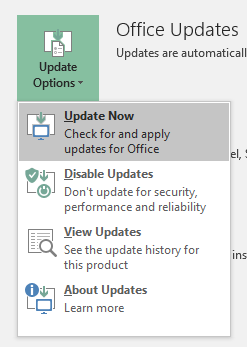

- #HOW TO APPLY MICROSOFT OFFICE UPDATES HOW TO#
- #HOW TO APPLY MICROSOFT OFFICE UPDATES INSTALL#
- #HOW TO APPLY MICROSOFT OFFICE UPDATES 64 BIT#
- #HOW TO APPLY MICROSOFT OFFICE UPDATES UPDATE#
- #HOW TO APPLY MICROSOFT OFFICE UPDATES LICENSE#
Right click the Office 2013 application, click on Properties.Ĭlick on Deployment Types tab, click on the msi file and click Edit.Ĭlick on Content tab, set the Content location to Office 2013 folder ( or a folder where Office 2013 installation files are present, remove proplusr.ww after Office 2013 ). The Application has been created successfully.
#HOW TO APPLY MICROSOFT OFFICE UPDATES INSTALL#
Choose the Install behavior as Install for system. We will change the Installation program command later. You can specify a little information about this application. The application information has been imported from. Open the SCCM 2012 R2 console, under the Application Management, right click Applications and click Create Application.Ĭhoose Automatically detect information and provide the path to file proplusrww.msi. Now click on File -> Save As -> save the customization file inside Updates folder. Double click the setting Disable Opt-in Wizard on first run and set the status as Enabled. Select Modify user settings, Microsoft Office 2013, Privacy, Trust Center. Click Add, provide the Name as SETUP_REBOOT and Value as Never. Select the Display level as Basic, check the box for Suppress modal and No cancel.
#HOW TO APPLY MICROSOFT OFFICE UPDATES LICENSE#
Click on I accept the terms in the license agreement. Select Install location and organization name, in the text box provide the Organization Name.Ĭlick on Licensing and user interface, choose the option Use KMS client key if you have KMS server in your organization for activating office 2013 suite, else choose Enter another product key and enter the office 2013 key. You will now see Microsoft Office Customization Tool, Choose Create a new setup customization file for following product, verify that correct product is selected. On the SCCM server run the command prompt as administrator, change the path where office 2013 setup files are located. The office 2013 setup files are stored on a drive in SCCM server in a folder named Office 2013. The files are extracted to Admin folder, you can also skip creating a folder manually because the OCT 2013 setup file creates a folder named Admin by itself and extracts the files in it. In the below screenshot I have manually created the Admin folder and copied the OCT 2013 setup file inside it. Run the OCT 2013 executable file and extract the files to a folder inside Office installation files. Once you download the OCT 2013 setup file you need to install the software.
#HOW TO APPLY MICROSOFT OFFICE UPDATES HOW TO#
How To Deploy Microsoft Office 2013 Using SCCM 2012 R2

You can refer to SCCM 2012 R2 step by step guide here. We are basically looking for an unattended setup of Microsoft Office 2013 and this can be achieved only when you customize the installation using office customization tool. As there is no admin folder with MSDN copy we will first download Office Customization Tool 2013 from here. If the Admin folder does not exist, the disk is a retail edition. If the Admin folder exists, the disk is a volume license edition. To determine whether an Office 2013 installation is a volume licensed version, check the Office 2013 installation disk to see whether it contains a folder named Admin.

We know that the OCT (Office Customization Tool) is available only with volume licensed versions of Windows Installer-based Office 2013, Office 2010, and the 2007 Office system.
#HOW TO APPLY MICROSOFT OFFICE UPDATES 64 BIT#
In this post we will be deploying Microsoft Office Professional Plus 2013 64 bit edition and the copy of office that I have is an MSDN copy. If you are planning to deploy Microsoft Office 2010 using SCCM 2012 then you can click on this link. You can also use this guide to learn all the steps to enable and install updates, and to check the version of Office that you're running.How To Deploy Microsoft Office 2013 Using SCCM 2012 R2 In this post we will see how to deploy Microsoft Office 2013 using SCCM 2012 R2. If you want to enable updates again, you can use the same instructions outlined above, but on step No. Once you complete these steps, your Office apps will no longer download and install updates automatically.
#HOW TO APPLY MICROSOFT OFFICE UPDATES UPDATE#
On the right side, click the Update options menu.To stop getting updates and features for Office on Windows 10, use these steps: How to disable automatic updates for Microsoft Office


 0 kommentar(er)
0 kommentar(er)
